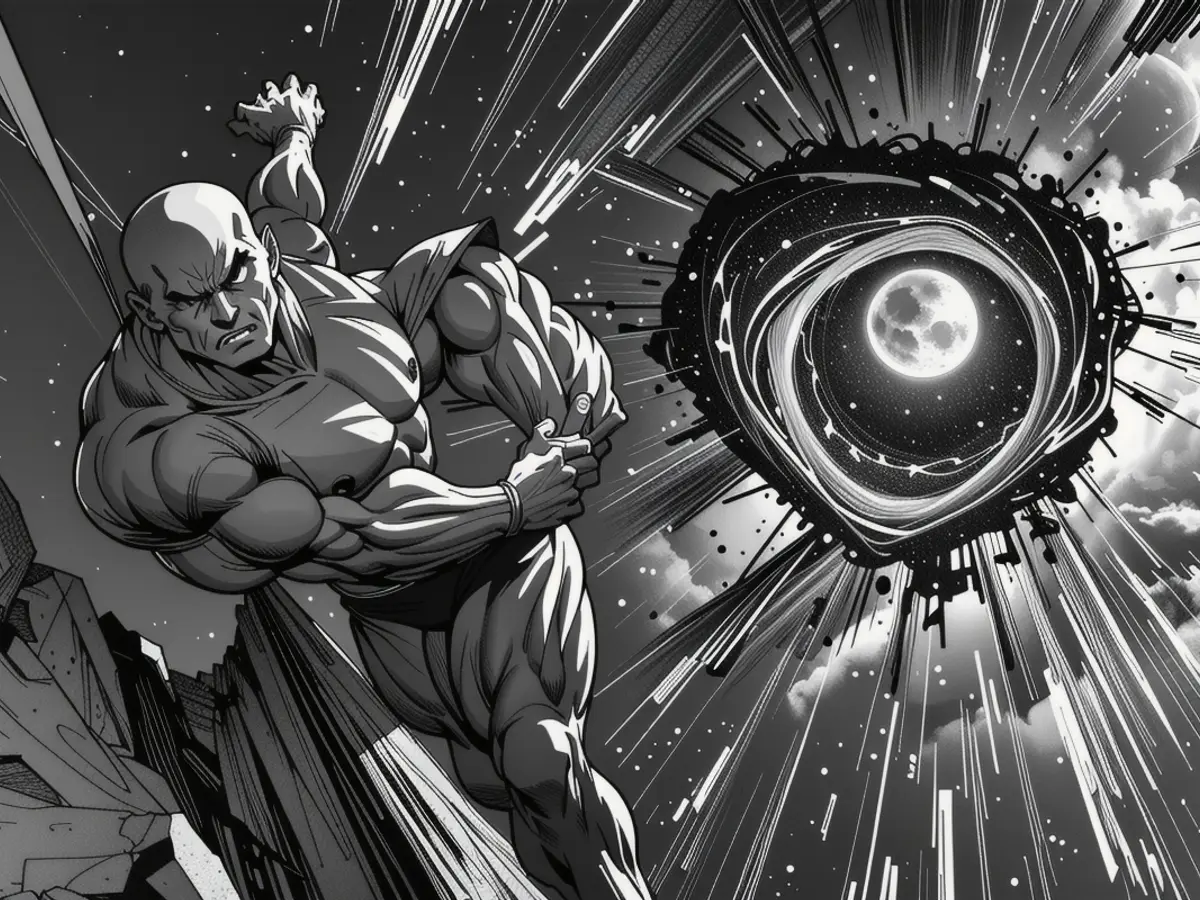Hangin' with Kamo'oalewa: Mysterious Asteroid and the Moon Connection
Emerging Studies Suggest Violent Birth of Earth's Mysterious 'Near-Moon' Entity
Discovered in 2016, the oddball asteroid, Kamo'oalewa, has intrigued scientists due to its unusual connection with Earth's orbit. Recent speculations hint at a possible lunar birth for this quasi-satellite.
A groundbreaking study by planetary scientists from China's Tsinghua University proposes that Kamo'oalewa might've originated from an impact crater on the Moon's far side - the Giordano Bruno impact crater to be precise [1][5]. By simulating the potential collision, the researchers determined that an asteroid collision at this site could've catapulted a chunk of lunar rock into its current orbit [4].
Kamo'oalewa, meaning 'oscillating fragment' in Hawaiian, is unusual for its Earth-like orbit and stability, making it the most stable known quasi-satellite. It measures roughly 40 to 100 meters wide and maintains an orbit close to Earth's for millions of years, unlike other quasi-satellites that depart after a few decades [3].
Previously, research suggested that Kamo'oalewa might hail from the Moon, considering its striking similarity in rocky makeup [5]. This latest study, however, takes the theory a step further, using a computer model to estimate the size of the asteroid that might've caused the lunar crater responsible for Kamo'oalewa's birth.
Additionally, the researchers observed similar light spectra in samples of Moon material and Kamo'oalewa, indicating a strong possibility of a lunar origin [3]. The idea of Kamo'oalewa's formation occurring between 1 to 10 million years ago narrows down the hunt for the impact crater to relatively recent lunar scars [2].
The Giordano Bruno crater, spanning 21.9 kilometers in width, located on the Moon's hidden side, is a prime suspect for the investigation, given its formation during the same period. This crater's size and location make it an ideal candidate for studying Kamo'oalewa's origins [2].
The Chinese Tianwen-2 mission, slated for launch in 2025, aims to collect samples from this strange asteroid, which could potentially solidify the lunar origin hypothesis. Meanwhile, China also has plans for its first asteroid mission, ZhengHe, scheduled for a 2024 launch. This mission will provide invaluable information about Kamo'oalewa, possibly confirming or refuting the lunar origin theory through detailed chemical and physical analysis of the samples [4].
More: Asteroid Samples: Crumbs from an Ancient Ocean World?
Enrichment Data
### Overall:
Introduction to Kamo'oalewa Asteroid and Potential Lunar Origin
The asteroid Kamo'oalewa, discovered in 2016, has attracted attention due to its mysterious connection with Earth's orbit and its potential origins. Current theories suggest that Kamo'oalewa could be of lunar origin, possibly resulting from debris ejected during an impact on the Moon's surface [1][5].
Evidence for Lunar Origin
- Spectral Analysis: The unusual reddening observed in Kamo'oalewa's spectrum could match materials from the Moon, particularly from impact ejecta [5].
- Orbital Characteristics: Kamo'oalewa's orbit is influenced by Earth but dos not orbit within Earth's gravity field. Its stability as a quasi-satellite suggests a recent origin, potentially linked to ejection from the Moon [5].
Upcoming Investigations
While the Chinese Tianwen-2 mission is not specifically targeting Kamo'oalewa, plans for the country's first asteroid mission, ZhengHe, aim to visit and sample Kamo'oalewa in 2024 [4]. This mission will deliver crucial insights into the asteroid's composition and origin, potentially confirming or refuting the lunar origin hypothesis through detailed chemical and physical analysis of the samples brought back to Earth.
- The latest hypothesis about Kamo'oalewa, the oddball asteroid discovered in 2016, suggests a possible lunar origin, with the Giordano Bruno impact crater on the Moon's far side being a prime suspect.
- A groundbreaking study by researchers from China's Tsinghua University proposes that Kamo'oalewa might have originated from an asteroid collision at the Giordano Bruno impact crater, which could have catapulted a chunk of lunar rock into its current orbit.
- The Tianwen-2 mission, scheduled for launch in 2025, is not specifically targeting Kamo'oalewa, but it aims to collect samples from this asteroid, which could potentially solidify the lunar origin hypothesis.
- Future technology, such as the Chinese ZhengHe mission, slated for a 2024 launch, will provide invaluable information about Kamo'oalewa, potentially confirming or refuting the lunar origin theory through detailed chemical and physical analysis of the samples brought back to Earth.




